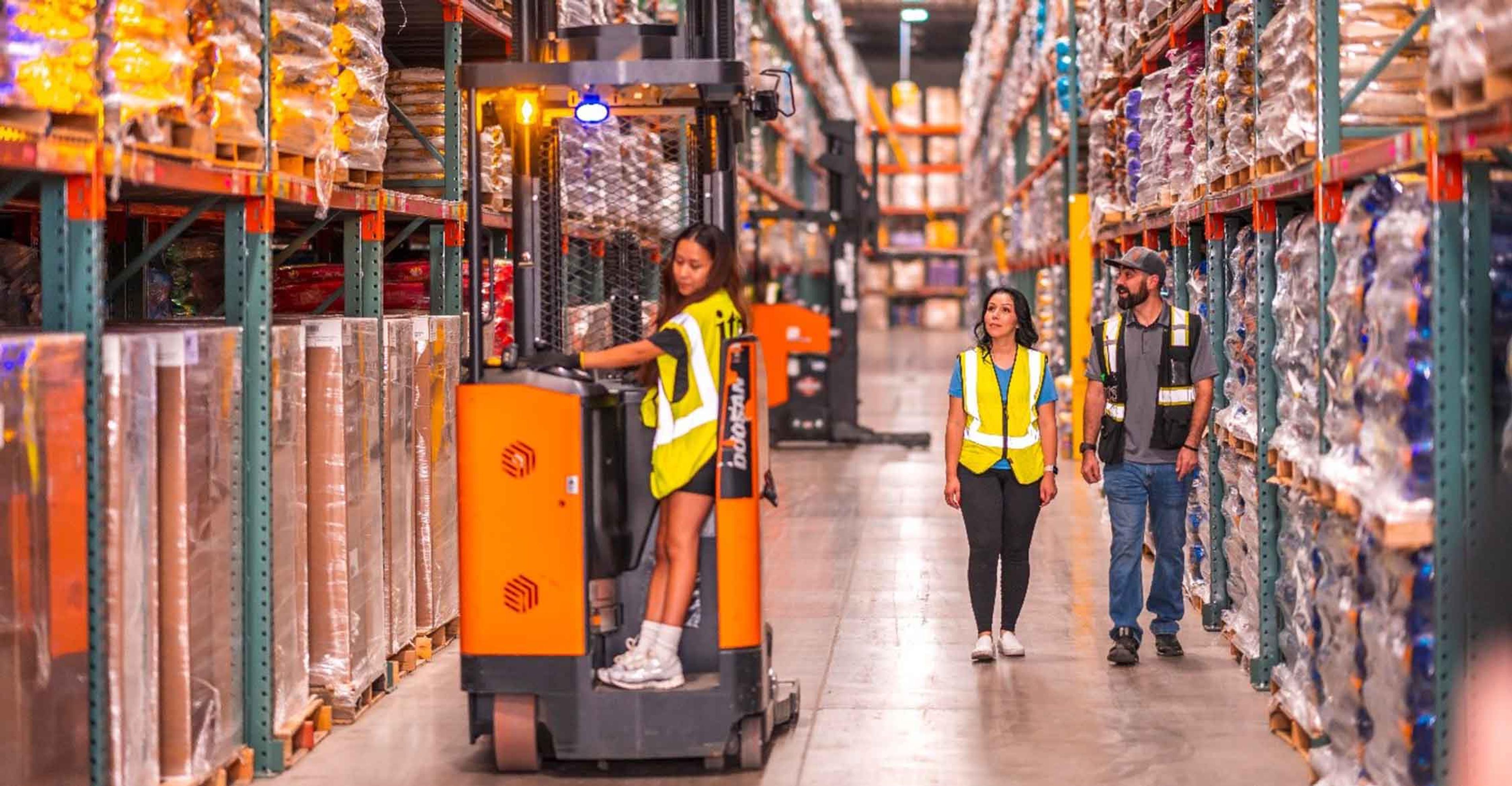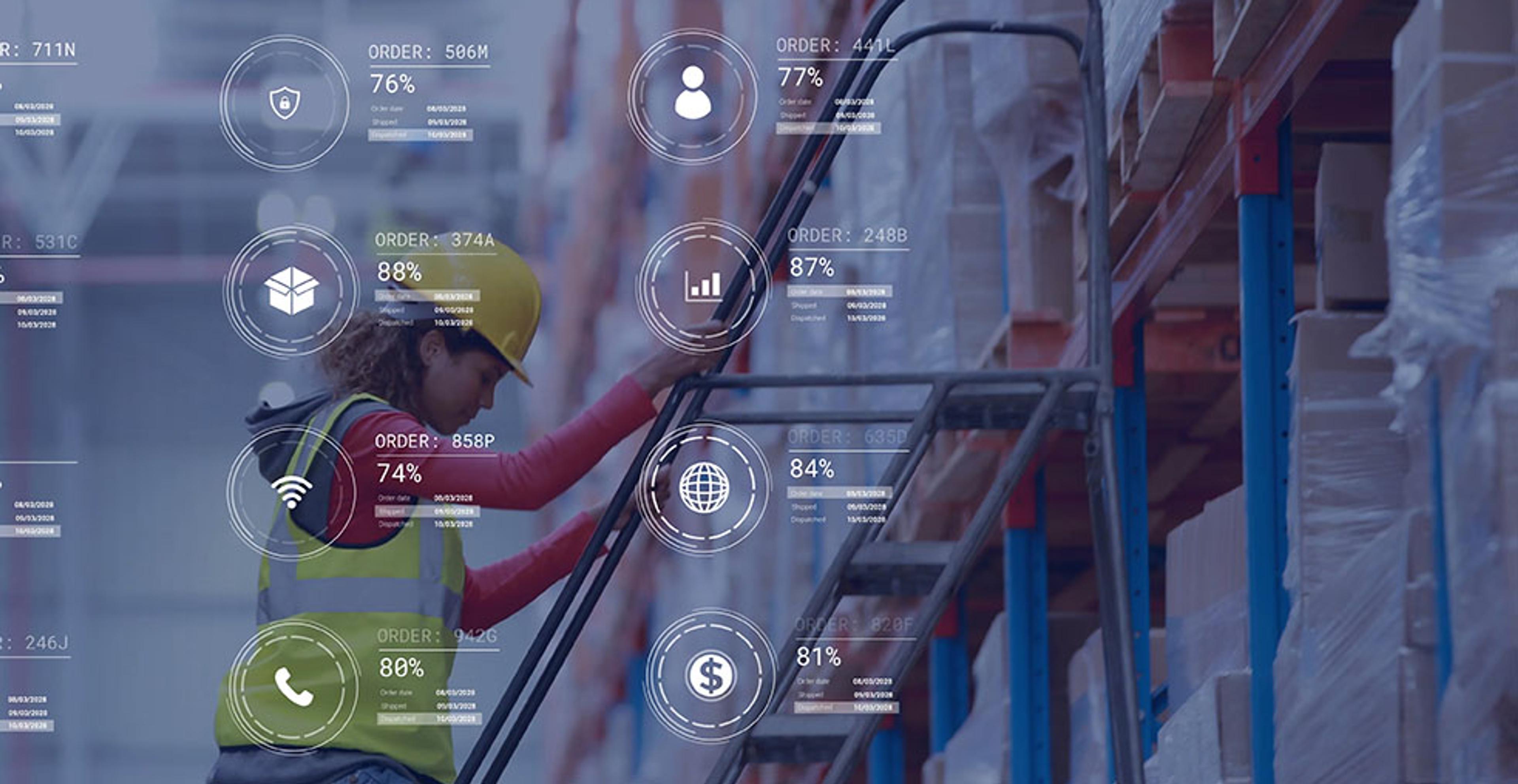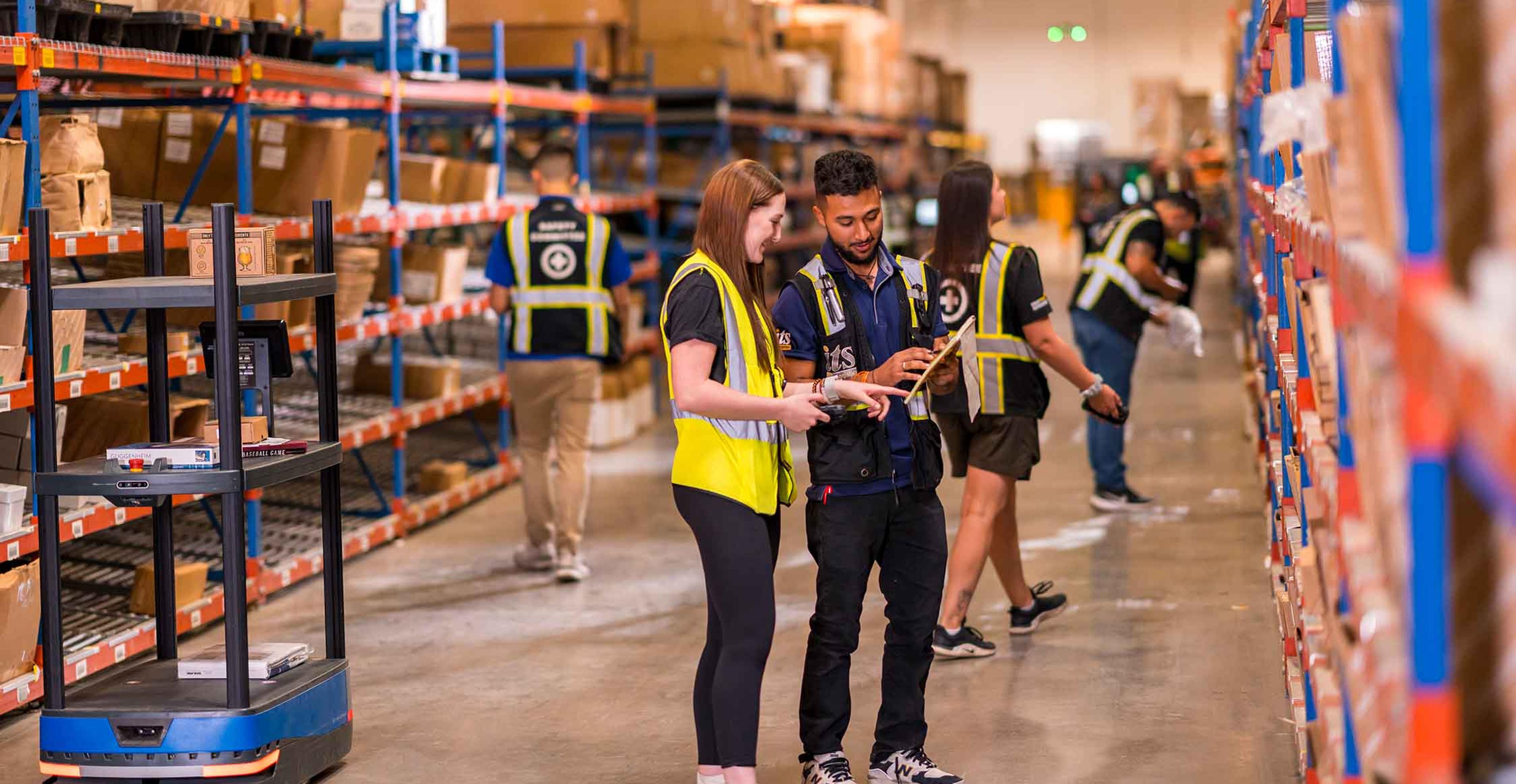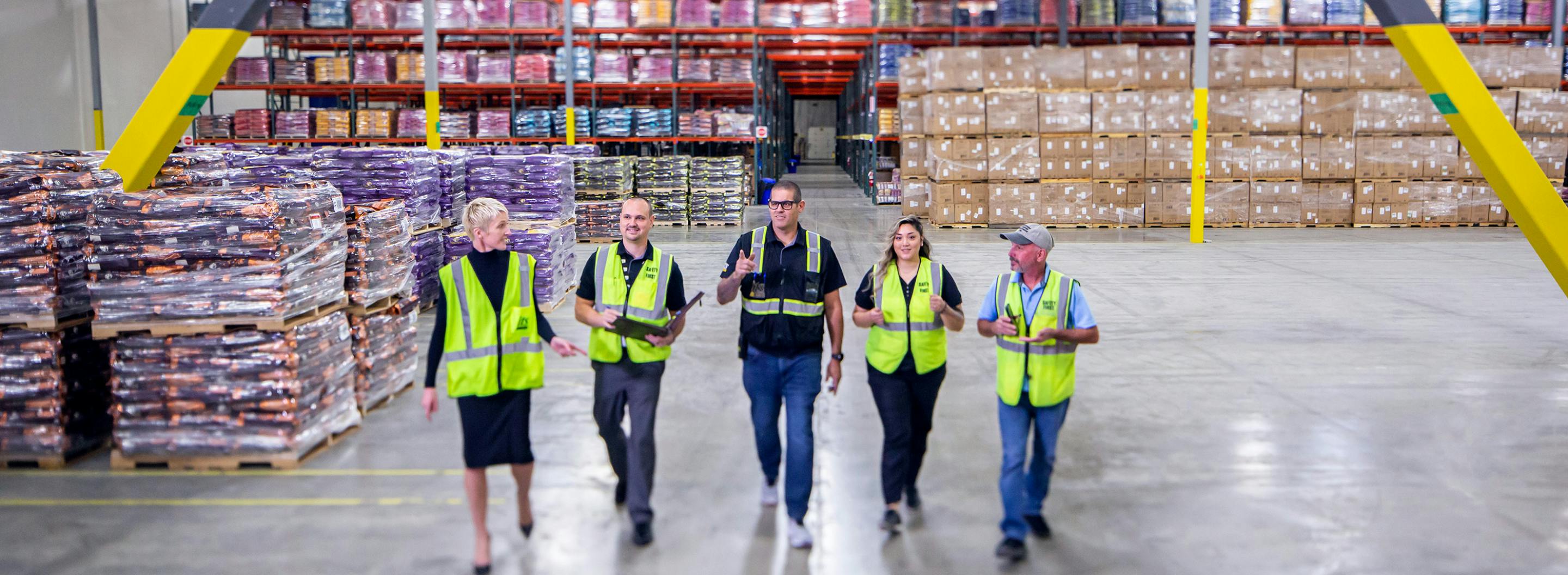
Tapping into Amazon gives retail companies access to the largest pool of online shoppers in the US. When it comes to ecommerce, Amazon is a world of its own; the company has long dominated the online sales market, capturing 37.6% of online sales in 2023 according to the most recent estimates. To put that into context, Amazon’s closest competitor, Walmart, captured 6.4%.
Amazon is an online sales engine that can provide businesses with an opportunity to capture market share and gain exposure to new audiences. However, selling on Amazon isn’t always a plug-and-play process, especially for larger, more complex businesses.
Choosing the right transportation and fulfillment method is an important part of this decision, and there are several Amazon seller shipping options to choose between:
- Fulfillment by Amazon (FBA)
- Seller Fulfilled Prime (SFP)
- Amazon Merchant Fulfilled Network (MFN/FBM)
Each option comes with its own challenges, costs, and opportunities.
Fulfillment by Amazon (FBA): Amazon’s Most Plug & Play Shipping Solution
FBA is Amazon’s most accessible shipping option and the most popular choice for small-to-medium-sized businesses (SMBs). It’s a straightforward process: Inventory gets shipped to an Amazon warehouse, and Amazon handles the rest, including storage and fulfillment.
FBA Costs
FBA is charged at a cost-per-unit rate that is set based on factors like weight and dimensions. There are two main expenses: fulfillment and storage. Fulfillment costs can vary. Storage costs are billed monthly based on the amount of cubic feet inventory takes up in the fulfillment center.
These costs depend on the season and can more than double during peak. They can also change depending on the inventory type and volume. Generally, the faster inventory moves, the better for the bottom line.
Several other costs that come with being an FBA seller include:
- Aged inventory: charged monthly for items stored more than 181 days
- Removal orders: a per-item charge for returns and disposal
- Unplanned services: charged when inventory arrives without meeting Amazon’s requirements of preparation and labeling
- Returns processing: charged on orders where Amazon provides free return shipping
Advantages of FBA
FBA gives businesses a mostly hands-off way to store inventory and fulfill orders using Amazon’s supply chain. Depending on the volume, season, and turnaround time on inventory, it can be cost-effective. FBA also gives sellers the coveted Prime badge, which appears on listings to guarantee shoppers things like two-day shipping and free returns. Prime sellers are given priority when it comes to the listings "buy box." At any given point, multiple Amazon sellers are competing to sell the same product. When an Amazon Prime shopper adds a product to their cart or clicks the “Buy Now” button, that order will go to a Prime seller— the more buy box control, the more sales for the seller.
The Disadvantages of FBA
FBA can also be very expensive, and the same factors that can make it affordable can also make it unaffordable. Aged inventory is a cost that can quickly creep up for products with slow turnaround times, which means accurate demand planning is essential to making FBA work well. Getting it right is a fine line of having just enough inventory to meet demand. However, if consumer demand unexpectedly surges, out-of-stocks can be another issue business have to deal with.
There’s also a brand representation angle to consider. A customer’s most tangible interaction with a brand or business ends with an Amazon package sitting on a doorstep.
Overpackaging is also an issue that can happen with FBA. Everything shipped through Amazon gets put into an Amazon box, even if that product was already in a box. It can be a bad look for businesses that are concerned with sustainability.
Lastly and most importantly, fulfilling through FBA usually doesn’t come with a lot of control or visibility.
Seller Fulfilled Prime (SFP): Bypassing Amazon
SFP allows businesses to fulfill Amazon orders from their own warehouse while still receiving all the benefits of a Prime Badge. This option gives businesses a lot more control and flexibility, but it also comes with conditions. To be eligible for SFP, businesses have to qualify for it and go through a 30-day trial period that involves fulfilling a minimum of 100 orders while maintaining certain standards, including:
- An on-time delivery rate of at least 93.5%
- A valid tracking rate of at least 99%
- A seller-initiated cancellation rate of less than 0.5%
Businesses will need to maintain those standards passed the trial period once they are an enrolled seller. Once a business is enrolled into the program, they will also need to:
- Offer free one-day and two-day delivery for Prime customers
- Offer free nationwide standard shipping for all customers
- Meet minimum thresholds for one-day and two-day delivery speeds as viewed by Prime customer detail page views
- Maintain an on-time delivery rate of at least 93.5%
- Maintain a valid tracking rate of at least 99%
- Maintain a seller-initiated cancellation rate of less than 0.5%
- Ship and deliver Prime orders on weekends (Saturday, Sunday, or both)
- Offer Free Returns on items weighing under 50 lb
Businesses should have the following capabilities and assets before considering SFP:
- A warehouse to store inventory
- Access to premium shipping options
- Access to supported SFP carriers
- Willingness to agree to the Amazon Returns Policy
Amazon SFP Costs
With SFP, businesses incur all the costs associated with distribution and fulfillment, which can be either cheaper or more expensive than FBA depending on the business and shipping method.
If a business has already been offering free, two-day shipping on ecommerce orders, then the price of Amazon order fulfillment might not come with a lot of sticker shock. If a business hasn’t been handling a lot of ecommerce fulfillment, SFP will come with much higher costs and a steep learning curve.
Advantages of SFP
Businesses maintain full control of their supply chain and customer experience while receiving all the benefits of a Prime badge. Because businesses have more control, they can adjust better to shifts in consumer demand.
Another perk of SFP is that businesses run their own supply chain operations, which means more chances to find efficiencies that are unique to that business. Amazon’s supply chain is efficient in many areas, but its monster size doesn’t allow for a lot of customized solutions.
SFP also gives businesses better control over brand representation and helps avoid overpackaging. If sustainability is a major business priority for a business, then fulfilling via SFP is the best option.
Disadvantages of SFP
SFP can be expensive and unsustainable for businesses that don’t have the resources in place to maintain Amazon’s strict standards. Carrying the cost of free, two-day shipping can quickly eat away at margins if it’s not done correctly.
Even if a business does have the resources in place, scaling can become an issue. Small inefficiencies become bigger, more-costly inefficiencies at scale. Adding Amazon as a retail channel will bring some level of growth, so it’s important for businesses to consider whether supply chain operations will remain cost-effective if sales pick up.
Businesses must also purchase packing slips through Amazon. This process entails logging into Amazon Seller Central and creating and printing shipping labels. This can be labor intensive if a business’s system isn’t able to directly integrate with Amazon’s API.
SFP also comes with the requirement of allowing free returns. Offering free returns is great for customer service, but not always great for a business’s bottom line. If a business doesn’t have a distribution center that has the capacity to meet Amazon’s requirements, it might not be the best fit.
Amazon Merchant Fulfilled Network (FBM/MFN): A good fit for some
Amazon Merchant Fulfilled Network and Fulfilled by Merchant are synonymous terms and refer to when a business lists products on Amazon but manages storage, shipping, and customer support independently. This method may sound like Seller Fulfilled Prime on the surface, but there’s one crucial difference: FBM/MFN doesn’t come with a Prime badge.
FBM/MFN can be done in two different ways: through an individual plan or a professional plan. The biggest difference comes down to shipping rates:
- Individual plan – Business’s use Amazon’s set shipping rates and ship orders at the set rate. Amazon does supply shipping credit, but it doesn’t always equal the total shipping cost. Businesses using this option will need to price their items appropriately to maintain a decent profit margin.
- Professional plan – Businesses set their own shipping rates and pay Amazon a referral fee, which can vary depending on the product category, sales price, shipping cost, and gift-wrapping charges.
Advantages of Amazon FBM/MFN
FBM/MFN allows businesses to avoid FBA expenses and fulfill orders directly to the customer without having to worry about shipping speed. This selling option comes with some of the same advantages as SFP without the Prime badge — better control over packaging, brand representation, and customer service.
With FBM/MFN, businesses take on the responsibility of all order fulfillment and customer service issues, including returns, which can be an advantage or a disadvantage depending on the business. Amazon FBM/MFN can also be a cheaper option because businesses can choose a more relaxed shipping method.
Selling through FBM/MFN is also faster to get up and running than SFP, since businesses don’t have to go through the trial period. Another benefit of not having to meet all of Amazon’s SFP regulations is that businesses won’t experience unexpected costs, which can potentially lead to greater margins. Businesses also won’t have to worry about unexpected changes Amazon might make to their policies and will have to spend less time doing paperwork.
Overall, this selling method is great for smaller businesses that:
- Sell a low volume of products
- Keep a small amount of inventory
- Ship heavy or large items
- Have space to store products
- Have temperature sensitive goods
Disadvantages of FBM/MFN
The biggest disadvantage to FBM/MFN is the absence of the Prime eligibility and less control of the buy box. Shoppers will have to dig through a listing’s selling options to find an FBM/MFN seller, which most shoppers don’t like to do. Most shoppers prefer to buy through a Prime seller because of the guarantees that come with it— free two-day shipping, free returns, etc.
Outsourcing Amazon fulfillment to a qualified 3PL
Adding Amazon as a retail channel gives businesses access to the largest online marketplaces in the US. Reaching Amazon customers is a great opportunity, but the shipping options can be limiting. Outsourcing Amazon fulfillment to a qualified 3PL, like ITS Logistics, gives businesses all the benefits of meeting tricky requirements without Amazon’s price tag or having to lose control to Amazon’s supply chain.
ITS Logistics and its team have decades of expertise in every type of fulfillment service and know how to navigate the complexities of each Amazon shipping option in a way that works best for businesses. With the highest level of service, unmatched industry experience and work ethic, and a laser focus on innovation and technology– the team at ITS strives to improve the quality of life for its partners by delivering excellence at every turn.
ITS Logistics’ high standard for distribution and fulfillment:
- 99.67% ASN Timeliness
- 99.89% Load Quality
- 99.89% ASN Accuracy
- 99.92% On-Time Shipping
- 99.48% Fill Rate
- 99.38% Pallet & Carton Labeling
Reach out to learn more about ITS Logistics and find a creative logistics solution that will work for your business.
How can we help you?
Check out these additional ecommerce fulfillment resources:
- Reverse logistics in ecommerce
- Essentials for ecommerce drop shipping fulfillment
- UncommonGoods and ITS Logistics – an ecommerce case study



